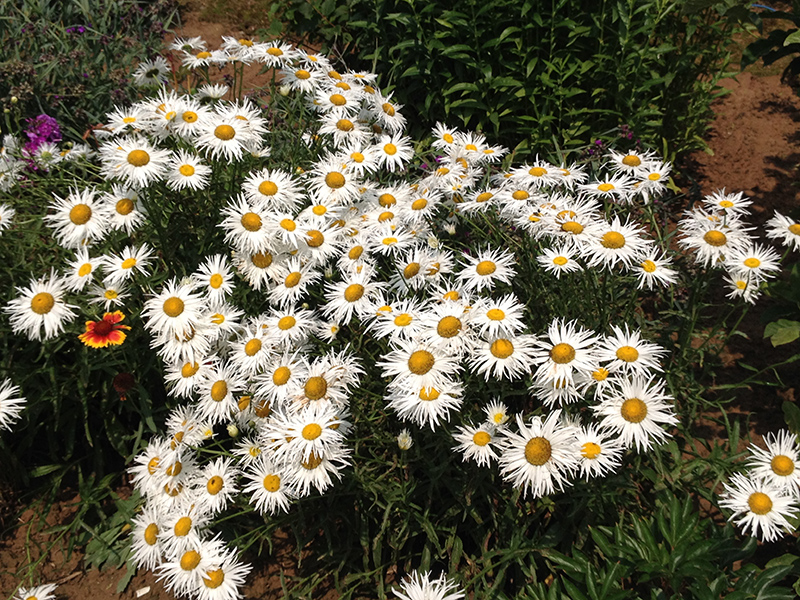Leucanthemum x superbum ‘Crazy Daisy’ is a truly spectacular perennial that deserves a spot in every garden With its large, fluffy double blooms and twisted white petals, this plant provides unique beauty and visual interest In this article, we’ll explore why ‘Crazy Daisy’ has become so popular with gardeners.
An Eye-Catching Hybrid
‘Crazy Daisy’ is a hybrid Shasta daisy developed by the famous Luther Burbank in the late 1800s. Burbank crossed several daisy species, including the oxeye daisy, Pyrenees chrysanthemum, Portuguese field daisy, and Japanese field daisy. The result was the creation of Leucanthemum x superbum, commonly known as the Shasta daisy.
The hybrid name “superbum” hints at the superb qualities of this new daisy. ‘Crazy Daisy’ is a cultivar of the Shasta daisy known for exceptionally large, doubled blooms reaching 2.5 inches across. The white petals twist and curl, creating a delightfully messy, frilly effect. It’s easy to see why the name ‘Crazy Daisy’ fits this plant so well!
Growing Conditions
‘Crazy Daisy’ thrives in full sun and moderately moist, well-drained soil. Good drainage is crucial, as wet winter soils can be fatal to these daisies Some afternoon shade in hot summer climates can be beneficial. Plants prefer average fertility and neutral pH levels between 60-7.0.
This daisy is quite drought tolerant once established, Allow the soil to dry slightly between waterings Fertilize a few times per year with a balanced fertilizer, Divide clumps every 2-3 years in early spring to maintain vigor Remove spent blooms regularly to encourage reblooming,
With proper care, ‘Crazy Daisy’ will provide seasons of joyful blooms. It can tolerate light shade but does best with at least 6 hours of direct sun per day.
Gorgeous, Long-Lasting Blooms
One of the best qualities of ‘Crazy Daisy’ is its long bloom time. Plants begin flowering in early summer and continue into the fall. The cheerful white and yellow blossoms appear singly or in small clusters on long, sturdy stems.
Deadheading promotes more blooms. The flowers make exceptional cut flowers, lasting up to 2 weeks in bouquets. ‘Crazy Daisy’ blooms hold their form beautifully even after being cut.
In the garden, the flowers contrast nicely with purple coneflowers, black-eyed Susans, and other summer perennials. They also combine well with ornamental grasses. Plant en masse for a bold effect.
Easy Care and Few Problems
‘Crazy Daisy’ is one of the easiest Shasta daisies to grow. It has few pest or disease problems beyond the occasional aphid or leaf spot. Staking is rarely necessary since the strong 2-3 foot stems support the flowers nicely.
Simply remove spent blooms and any damaged foliage to keep plants looking their best. In areas with hot summers, cut plants back by half after initial flowering to encourage a second flush of blooms in fall. Mulch around the base to help retain moisture.
With minimal care, ‘Crazy Daisy’ provides drama and beauty to the garden over a long season. It’s no wonder this daisy has become a perennial favorite! The eye-catching double blooms and carefree nature make ‘Crazy Daisy’ a must for gardens of all sizes.
An Iconic Summer Flower
No summer garden is complete without the iconic blooms of Shasta daisies. ‘Crazy Daisy’ takes the classic daisy appeal and amplifies it with doubled, twisted petals for unique cottage garden charm.
As a hybrid created over 100 years ago, ‘Crazy Daisy’ has withstood the test of time. Its cheery flowers lend a sense of nostalgia and timeless beauty. They evoke images of charming country gardens and meadows dancing with white and yellow daisies.
Few flowers embody the essence of summer better than the Shasta daisy. ‘Crazy Daisy’ should have a spot in every sunny garden space and perennial border. Give this carefree bloomer a try this year – your garden will thank you!

Shasta Daisy Lovers: Grow Bigger, Healthier Plants with These Shasta Daisy Care Tips #garden
FAQ
How tall do Leucanthemum crazy daisies get?
Does Leucanthemum x superbum like sun or shade?
Is a crazy daisy a perennial or annual?
How big do Leucanthemum superbum get?
Is Leucanthemum X superbum a perennial?
Highly floriferous and robust, Leucanthemum x superbum (Shasta Daisy) is a free flowering herbaceous perennial valued for its abundant floral display and disease resistance. It produces a sea of large, pure white, single daisy flowers with golden yellow centers atop a lush basal rosette of dark green leaves.
How do you grow Leucanthemum X superbum?
Cut stems down to the ground in winter. Propagate by division in early spring or late summer. Leucanthemum x superbum is a hybrid resulting from a cross between L. vulgare (Ox-Eye Daisy), L. maximum (Pyrenees Chrysanthemum), L. lacustre (Portuguese Field Daisy) and Nipponanthemum nipponicum (Japanese Field Daisy).
What does Leucanthemum mean?
Leucanthemums were formerly included in the genus Chrysanthemum. Genus name comes from the Greek leukos meaning white and anthemum meaning flower in reference to the white flowers of some species. The hybrid name superbum means superb. ‘Crazy Daisy’ is a Shasta daisy cultivar that typically grows 2-2.5’ tall.
- The Ultimate Guide to Growing Strawberries in Raised Beds - August 8, 2025
- No-Dig Garden Beds: The Easiest Way to Grow a Beautiful Garden - August 6, 2025
- How to Protect and Preserve Wood for Raised Garden Beds - August 6, 2025
